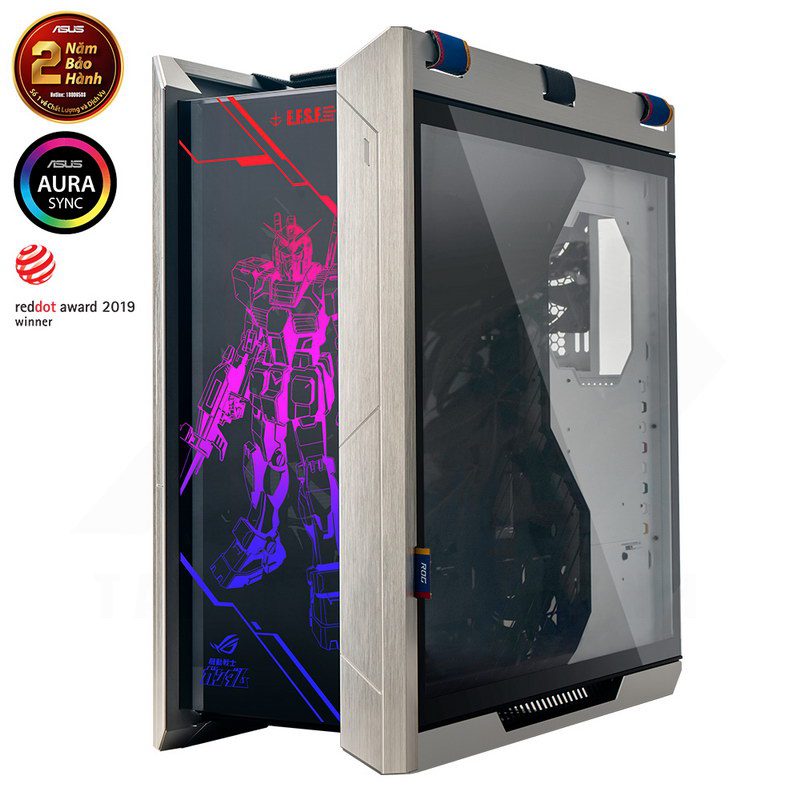

The I/O panel and buttons are only made of plastic, however it would really add to the premium feel if Asus had used some aluminium here, as this is actually one area designed to be physically interacted with. Power and reset buttons are complemented by both LED and fan control. A nice touch is that dust covers are supplied for two of the USB 3.0 ports and the Type-C just in case your board doesn't have the necessary headers to make these work. Four USB 3.0 ports are joined by a full-speed (Gen 2) USB 3.1 Type-C port, and the usual audio jacks. The I/O panel is easy to access if the case is on the floor, and it’s well equipped too. It’s annoying, however, that the sticker warning you to be careful when handling the glass leaves behind lots of residue when you peel it off. Both side panels and the front one are made from tempered glass, and the front one has integrated RGB lighting illuminating ROG logos and patterns. It’s a solid system in practice and makes lugging the chassis around considerably less daunting, although it is fussy weaving it back into place if you’ve removed it prior.Īsus embraces the tempered glass and RGB trend fully here. Just as well, because Asus weaves a strip of foam through these to act as a handle.

The front struts are made of plastic but have a brushed aluminium exterior, while the roof struts are fully aluminium and tightly secured to the steel chassis.

The side panels are a tad rattly but secure nonetheless, and overall build quality is very high, with rubber feet keeping the thing planted on smooth surfaces too. The ROG Strix Helios is solid and heavy (18kg), thus befitting its £250 price. Motherboard and graphics card manufacturers have historically only had small and largely unsuccessful ventures into the world of chassis, but equally if a company like Phanteks can storm in so successfully, there’s nothing stopping a behemoth like Asus from doing the same, and the ROG Strix Helios has certainly been generating buzz since it was unveiled in concept form at Computex last year and teased again at CES this year. The case market is notoriously crowded, so trying to make a name for yourself in it is risky business – even for a brand like Asus.


 0 kommentar(er)
0 kommentar(er)
